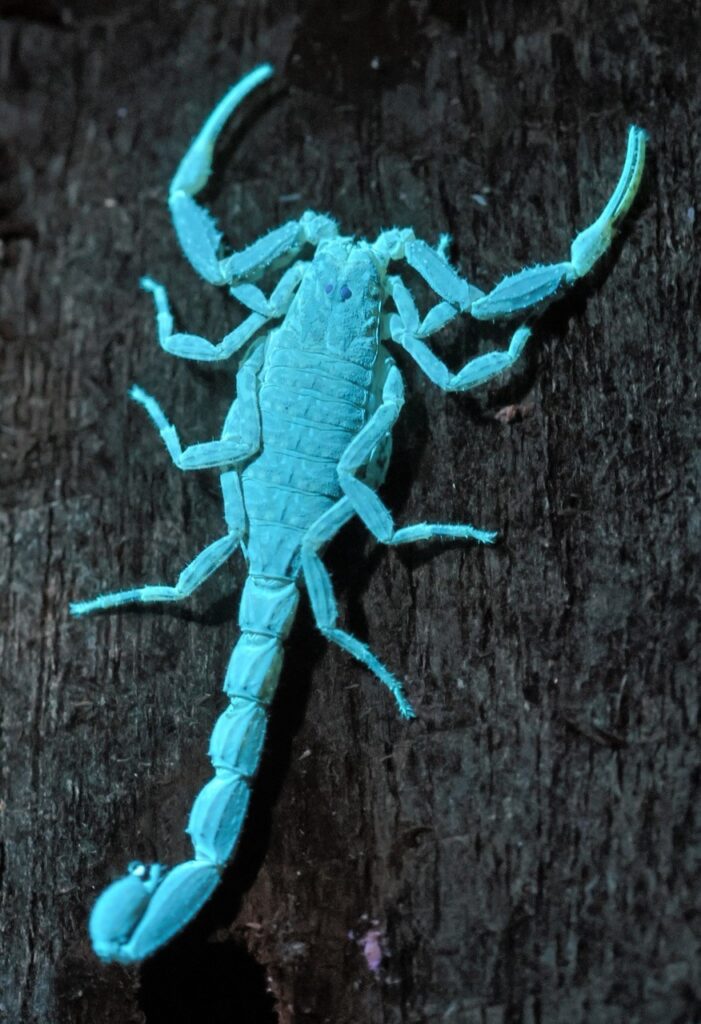Paluma after dark is a riot of colour if you go rambling with a black light (UV) torch.
Fungi and lichen on a letter box and a clump of palms at the start of Lennox Crescent light up like a coral reef under black light and there’s plenty more to be seen (animal and vegetable) along the walking tracks.
Under the blacklight at #56 this week this scorpion from damp lumber in the front yard lit up brilliantly for the camera of Jay Deagon, Jan Cooke’s niece.

(Canon EOSR7, with RF100 Macro, lighting from a Lumenshooter UV torch)
Jamie Oliver went online and found two possible species locally — Lychas variatus a species of marbled scorpions or another rainforest scorpion, perhaps Hormurus waigiensis.
Jay’s image seems to be the Lychas, much more gracile than the Hormurus.
Google tells us that all scorpions fluoresce under black light or even under strong natural moonlight. and no one is quite sure why.
“The blue-green glow comes from a substance found in the hyaline layer, a very thin but super tough coating in a part of the scorpion’s exoskeleton called the cuticle.
“Scientists have noticed that, right after a scorpion molts, or sheds its shell, it doesn’t glow until the new cuticle hardens. …
“Whatever its source, the glowing property is surprisingly long-lasting. When scorpions are preserved in alcohol, the liquid itself sometimes glows under UV light. And the hyaline layer is amazingly durable: It can survive millions of years … even fossilized hyaline fluoresces.
“Still, scientists don’t know what purpose the fluorescence serves. Some theories:
- It protects scorpions from sunlight
- It helps them find each other
- It might confuse their prey
Text by Peter Cooke, photo by Jay Deagon

Great article, Peter and fabulous image.
Another theory regarding the “purpose” of fluorescence in scorpions (and perhaps some of the other fluorescing life-forms we find around Paluma) is that it is simply an “evolutionary spandrel”. This term was coined by the renowned biologist and prolific essayist Stephen J Gould, and refers to the appearance of persistent but useless characters in various organisms. He borrowed the term from architecture (see: https://en.wikipedia.org/wiki/Spandrel_(biology) )
Jamie